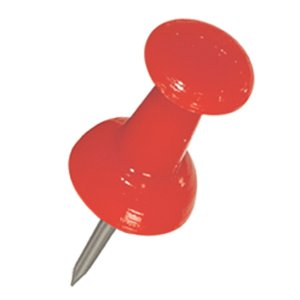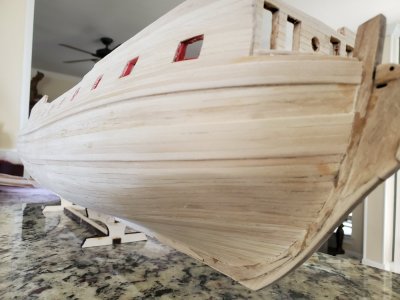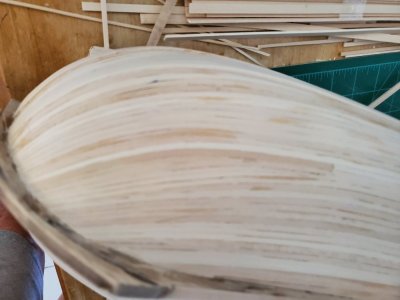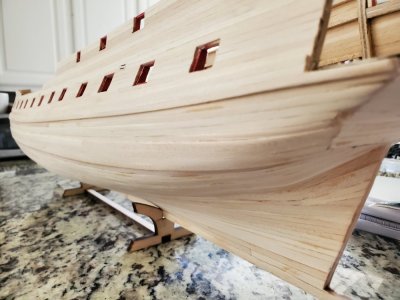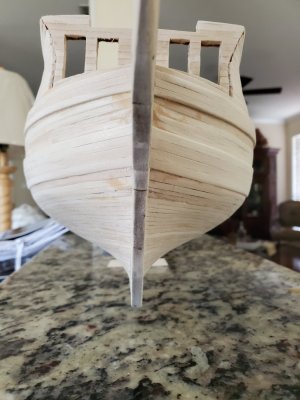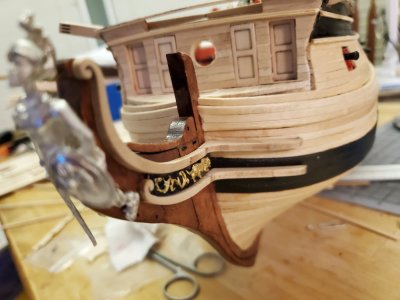Hi, I am new to this wonderful hobby and am building my first model, Polaris by OcCre, I have received several helpful emails from members but a thought has occurred while sanding the first planking layer. The OcCre videos and other vids show the pins in place and consequently you have to file them flat to get a flat surface for the next layer of planks.
My question is when I was carrying out the first planking I inserted the nails as shown on the plans, which is a lot of nails, but could I nail the pins in to say three quarter of their length rather than the whole way and when the glue has dried remove the nails. When the nails are hammered in flat it is difficult to remove them without damaging the planks.
Hello Dennis,
You're correct, your photo's certainly show an 'ugly' hull. But then, why would anyone expect perfection on a first outing? 'We' have spent a few thousand years making wooden ships and boats. An early version is in the museum in Aberdeen (the home of the 'Aberdeen bow that became 'the' standard on clippers) Anyway - that early boat is just a lump of wood, joints all over the place. A bit like yours.
Moving on to now, I think there are 2 things in particular that would help,
First - ignore the instructions about using pins. No-one in their right minds should be advocating embedding metal pins into the hull. Any attempts at abrasives will leave the heads or shanks as raised spots, and they are all too likely to signal through to the eventual surface. Use pins as temporary alignment, as others have said, but remove them all so that the entire surface is equally dense everywhere to await any abrasive you may need to use.
Second, I'm again echoing other replies, but fitting planks is just that - fitting - not 'applying' and not 'sticking them on'
in 1 to 1 scale practice each plank is shaped into its place, both along its length - made wider or narrower so that the flow of planking is uniform, with extra width at the ends created by fitting shorter, shaped planks. Various treatises on planking go into detail, but beware! read several, as some are wrong, or misguided, or simplistic, or written about a different style developed by builders in other countries.
Your pins should be keeping the shaped plank in place, and not pressuring it into place. That means the junction of planking to stem and stern needs attention, and the angle of the edges needs to be bevelled to allow the planks to snug up to each other.
When you've done the inner layer, the outer layer becomes simple.
While writing, I'll quickly bang on again about having a preference for full size practice, where frames are every couple of feet down the hull, and planks are attached with treenails, made from boxwood, or even bamboo. Treenails will sand back beautifully, correct frame spacing automatically gives a correct outer appearance of fixings. Mind - not for the faint hearted, and a knowledge of layout may be needed to translate diagrams into frame shapes. Also, you may not live long enough to finish the ship....
J






